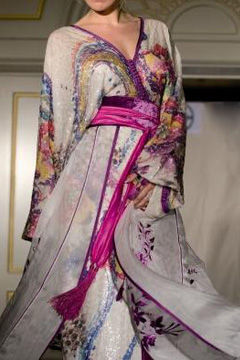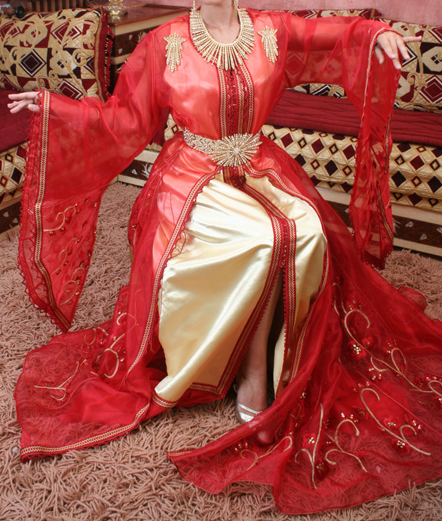Geography of Morocco
Essaouira beach
Morocco has a coast on the Atlantic Ocean that reaches past the Strait of Gibraltar into the Mediterranean Sea. It is bordered by Spain to the north (a water border through the Strait and land borders with three small Spanish-controlled exclaves, Ceuta, Melilla, and Peñón de Vélez de la Gomera), Algeria to the east, and Western Sahara to the south. Since Morocco controls most of Western Sahara, its de facto southern boundary is with Mauritania.
The internationally recognized borders of the country lie between latitudes 27° and 36°N, and longitudes 1° and 14°W. Adding Western Sahara, Morocco lies mostly between 21° and 36°N, and 1° and 17°W (the Ras Nouadhibou peninsula is slightly south of 21° and west of 17°).
The geography of Morocco spans from the Atlantic Ocean, to mountainous areas, to the Sahara desert. Morocco is a Northern African country, bordering the North Atlantic Ocean and the Mediterranean Sea, between Algeria and the annexed Western Sahara.
High Atlas in central Morocco
A large part of Morocco is mountainous. The Atlas Mountains are located mainly in the center and the south of the country. The Rif Mountains are located in the north of the country. Both ranges are mainly inhabited by the Berber people. At 446,550 km2 (172,414 sq mi), Morocco is the fifty-seventh largest country in the world (after Uzbekistan). Algeria borders Morocco to the east and southeast though the border between the two countries has been closed since 1994.
Spanish territory in North Africa neighbouring Morocco comprises five enclaves on the Mediterranean coast: Ceuta, Melilla, Peñón de Vélez de la Gomera, Peñón de Alhucemas, the Chafarinas islands, and the disputed islet Perejil. Off the Atlantic coast the Canary Islands belong to Spain, whereas Madeira to the north is Portuguese. To the north, Morocco is bordered by the Strait of Gibraltar, where international shipping has unimpeded transit passage between the Atlantic and Mediterranean.
The Rif mountains stretch over the region bordering the Mediterranean from the north-west to the north-east. The Atlas Mountains run down the backbone of the country, from the northeast to the south west. Most of the southeast portion of the country is in the Sahara Desert and as such is generally sparsely populated and unproductive economically. Most of the population lives to the north of these mountains, while to the south lies the Western Sahara, a former Spanish colony that was annexed by Morocco in 1975 (see Green March).[32] Morocco claims that the Western Sahara is part of its territory and refers to that as its Southern Provinces.
Morocco's capital city is Rabat; its largest city is its main port, Casablanca. Other cities include Agadir, Essaouira, Fes, Marrakech, Meknes, Mohammadia, Oujda, Ouarzazat, Safi, Salé, Tangier and Tétouan.
Morocco is represented in the ISO 3166-1 alpha-2 geographical encoding standard by the symbol MA.[33] This code was used as the basis for Morocco's internet domain, .ma.[33]
[edit]Climate
Ifrane, Middle Atlas, where the lowest temperature in Africa was recorded – (−24 °C (−11 °F), in 1935)
The climate is Mediterranean in the North and in some mountains (West of Atlas), which becomes more extreme towards the interior regions. The terrain is such that the coastal plains are rich and accordingly, they comprise the backbone for agriculture, especially in the North. Forests cover about 12% of the land while arable land accounts for 18%; 5% is irrigated. In the Atlas (Middle Atlas), there are several different climates: Mediterranean (with some more humid and fresher variants), Maritime Temperate (with some humid and fresher variants too) that allow different species of oaks, moss carpets, junipers, atlantic cedars and many other plants, to form extensive and very rich humid cloud forests. The climate changes when moving east of the Atlas mountains due to the barrier, or shelter, effect of the mountain system, becoming very dry and extremely warm during the long summer, especially on the lowlands and on the valleys facing the Sahara. The Sahara Desert begins here, and it is perfectly visible, for example, on the Draa Valley, where it is possible to find oases, sand dunes and rocky desert landscapes.
[edit]Biodiversity
Morocco is known for its biodiversity; Avifauna being the most notable.[34] The avifauna of Morocco includes a total of 454 species, five of which have been introduced by humans, and 156 are rarely or accidentally seen.[35]
The Barbary lion, hunted to extinction in the wild, was a subspieces native to Morocco and is a national emblem.[2] The last Barbary lion in the wild was shot in the Atlas Mountains in 1922.[36] The other two primary predators of northern Africa, the Atlas bear and Barbary leopard, are now extinct and critically endangered, respectively.
morocco culture,moroccan food,morocco food,moroccan cuisine,morocco beaches,moroccan meal,beaches in morocco,moroccan culture,hercules cave,hercules cave morocco






























